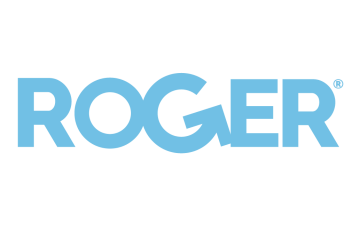Entrepreneurial Tools for Early Entrepreneurs
This article will provide you with a brief overview of the lessons learnt throughout predominantly three workshops of the Tilburg University Challenge. The Tilburg University Challenge is a competition that gives students the possibility to create and/or fine-tune their business ideas. The best 20 teams will give a final pitch. The grand final is Thursday this week, on the 12th of November. You can watch it online. Go to: https://www.tilburguniversitychallenge.nl/
Entrepreneurship involves a dynamic process that requires continuous learning, something that was highlighted well during the several workshops. What entrepreneurship is and what entrepreneurs are, is a matter of discussion. One thing is for sure; it depends on the context of the entrepreneur and his or her (nascent) firm.
The Tilburg University Challenge
The Tilburg University Challenge offers students the possibility to come up with innovative and entrepreneurial ideas for societal and entrepreneurial issues. One of the key goals is to educate young students to responsible individuals that can contribute to society with innovative thinking and solutions.
During the challenge, the students will get guidance from experts from both educational and corporate environments. The students will get help with the realization of a viable business plan. The challenge is spread out over two months and includes different workshops, lectures and meetings. It is a combination of both learning and competing. In the end, there will be a winning team. The winner will be the team that gives the best final pitch. This team will receive a paycheck, money they can use for the realization of their idea.
Who is the Entrepreneur?
The starting point of the workshops, and any business, is the entrepreneur him- or herself. To be straightforward; who is the entrepreneur?
To elaborate on this; it is about what drives the entrepreneur, what is essential for the entrepreneur, and what are the entrepreneurial skills? Answering these questions leads to the entrepreneur’s personal entrepreneurial vision.
Opportunities & The Problem
The previously answered questions direct the entrepreneur to a problem or need that is not solved or fulfilled yet—a problem or unfulfilled need that bothers the entrepreneur.
Now it is time to write a profound statement about the entrepreneur’s problem or unfulfilled need. The revisiting and rewriting of the statement can take some time, but that is no problem. It is essential to have a clear and concise statement.
After thinking about the problem statement, it is time to think about the solution (or possible solutions). It is important to keep room for an alternative solution. It is better to test different possible solutions, which leads hopefully to one final (working) solution than to fixate on just one solution.
When the problem and possible solutions are exact, it is time to focus. Whom will the entrepreneur target? Or in other words; what is the entrepreneur’s customer segment?
Now the problems, possible solutions, and the entrepreneur’s customer segment are apparent; we can summarize these aspects in a small framework; the so-called ‘Idea Adlib’.
The entrepreneur can fill in the framework for his or her own firm.
Idea Adlib
My start-up, <name>
Is working on <solution: product/service>
To help <customer segment>
Who want to <customer job/activity>
By <verb (e.g. reducing, avoiding) + customer pain>
And verb (e.g. increasing, enabling ) + customer gain>
Testing Assumptions
So far, we were busy with the verbalization of all concepts. Now we have made our thoughts explicit; it is time to test them.
‘Assumption is the mother of all mistakes.’ Assumptions can be problematic if that means that the entrepreneur’s initial thoughts are not right. This can, for example, lead to the production of a product nobody wants. Something that the entrepreneur wants to prevent.
Be aware of things like; ‘I think’, ‘If’, ‘But’, ‘Maybe’ and so forth. Test all the assumptions.
To do so, prioritize the assumptions first. Look at the impact and (un)certainty of the assumptions. Maybe the costs the entrepreneur has to make to validate the assumptions are also a factor the entrepreneur needs to take into consideration.
The entrepreneur can look at the viability, feasibility and desirability of the entrepreneur’s total business model and test the assumptions that are related to these factors. Use sentences as ‘We believe that:…’.
Experiment & Gather Evidence
Till now, we have focused on the entrepreneur, the entrepreneur’s context and the entrepreneur’s business model. We have made our thoughts explicit, and we have tested them. This leads us to the final stage; designing and carrying out some experiments and creating a prototype. We need to check our solution with the accompanying business model in the real world.
There are tons of experiments the entrepreneur can set-up and carry out, but a preferable one is the customer-interview. The customer-interview helps the entrepreneur acquire a deeper and more profound understanding of the entrepreneur’s potential customer. This interview can help the entrepreneur with learning more about the habits and behaviour of someone—something the entrepreneur might not find out with other methods. Again, the entrepreneur can prioritize and think about the most vulnerable parts of the entrepreneur’s solution and business model.
The final stage is the making of a prototype. This is the ultimate way to find if the entrepreneur’s potential customer is satisfied with the entrepreneur’s product/service (solution for their problem). So, the entrepreneur can make an MVP, a minimal viable product. This is the real deep dive that gives the entrepreneur the most realistic opportunity to find out how the entrepreneur’s product will work out in reality.
In The End
In the end; it is all about learning. ‘We grow as we go’. The trick is to do it smart and cheap. Do not unnecessarily waste resources like time, energy, money, and so on. In order to do so; verbalize, prioritize, check, built, test and validate.

0 Comments